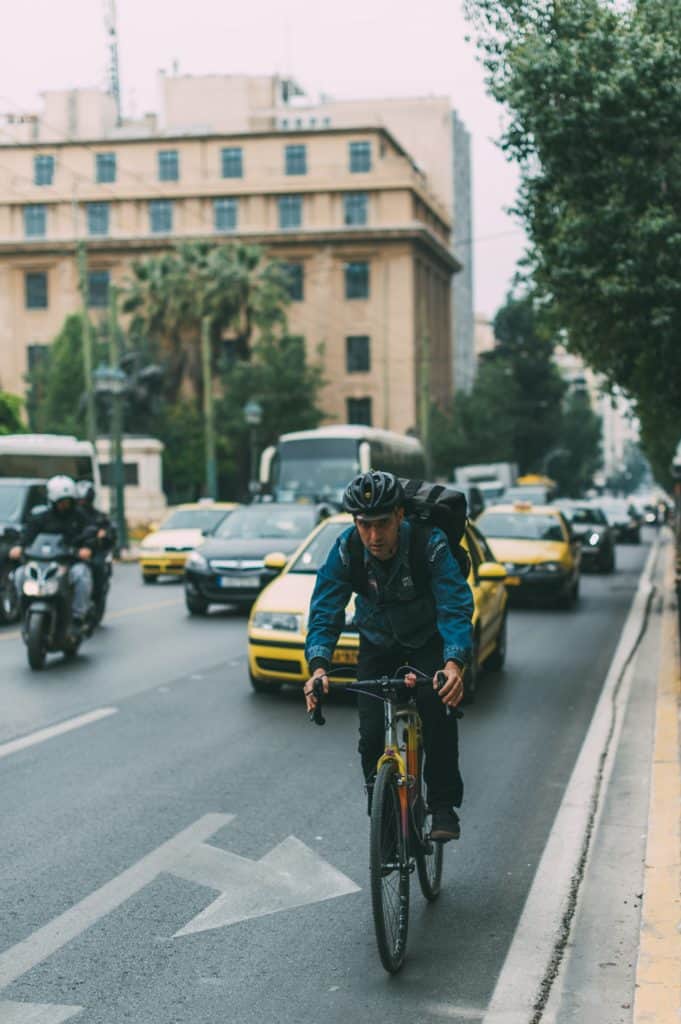Investing sounds really exciting and fun, but the first step in your journey needs to be creating an emergency savings account (or high-yield savings account) that holds 4-6 months’ worth of expenses to serve as a safety cushion in case disaster strikes. You may not think this applies to you, but use my story below as proof that this is essential and check out some key tips on how to make emergency savings a reality.
What if you were hit by a car?
I was only one year out of college, living the dream in San Francisco. After growing up in rural North Carolina, I was thrilled to land a job that allowed me to afford this city and there were so many exciting things to do. I had modest savings, was making new friends, found lots of new hobbies, and at 24 I felt like nothing could possibly go wrong.
Until I was hit by a taxi…in a hit and run.
No license plates, no contact information, lots of sirens and HUGE medical bills.
Spoiler alert, I did make a full recovery and am thankful every single day that I survived the accident. It also taught me a very important lesson on the importance of an emergency savings account and healthcare. Unfortunately, shit happens all the time, and even worse, medical bills are one of the top reasons people are forced into debt. While everyone prays that this never happens to them or their loved ones, it’s important to prepare as if it’s going to happen.

Let me walk through my experience.
About a month after the accident, the bills started rolling in. First, there was the ambulance bill (~$5,000), then the hospital fees (~$20,000), drug fees (~$1,000), x-rays ($500) and the ridiculous $16,000 markup because it was classified as an emergency. Not going to lie, I cried when I saw these bills and my mind was racing with thoughts like “How can I possibly cover all of this? Can I stay in San Francisco or will I have to move? What am I going to do?”
Thanks to health insurance, the majority of my bills were covered, and at the end of the day, I owed roughly $5,000, which is far more manageable than the original $42,500 I originally faced.
The only reason I was able to avoid taking out a loan and forcing myself into debt (on top of student debt) was that every month I tucked away money and had about $5,000 in emergency savings.
For obvious reasons, I’m a huge advocate of prioritizing an emergency fund, which should include at least 4-6 months of expenses. I personally lean towards tucking away 6-8 months, and this includes rent, utilities, gas, car insurance, and groceries. This budget shouldn’t include frivolous or extravagant expenses, just what you’d absolutely need.
I personally targeted $10,000, but if you’re just getting started and that feels like an overwhelming number, first set a goal of $500 over a few months. Once you hit that goal, and you know you can do it, do it all over again.
There’s a scary statistic floating around right now that 40% of Americans couldn’t cover a surprise $400 expense. This has to change and I’ve outlined some tips below to help you build your safety net.
Cheat Sheet: Bolster your emergency savings
- Eat at Home. Don’t eat out until you hit your goal, and even then, limit restaurant food. Eating out is almost 5 times more expensive than making food at home, and it sneaks up on your wallet without you even realizing it.
- Cut back on alcohol. Not only will your body be happier, but it’s incredible at how much money you can save by not drinking, especially at a bar.
- Find affordable hobbies. Maybe plug in a podcast and go on a walk, take your dog to the park, use any free time to learn a new skill (personal finance?), play a board game with friends, really do just about anything that doesn’t have you spending money. Huge plus if it’s a side hustle and is bringing in additional income.
- Tell your friends and family about your goal. Having social support can not only help keep you accountable to your goal, but good friends will understand that you aren’t meeting them at the restaurant or bar so you can get your house in order. Who knows, maybe they need some social support also and you can do this together. I have very strong opinions about normalizing money discussions, but that’s for another post.
- Turn auto savings “ON”. Tuck $50 away each month…that’s just over $10 a week so if you think about finding a way to save just $2 a day, with a few days of wiggle room, you’ll be well on your way.
Check out additional topics to make personal finance SLIGHTLY EDUCATIONAL on our Personal Finance page.



